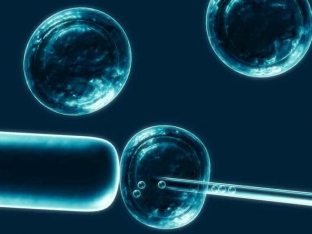The study of stem cells is one of the most promising areas of modern science and medicine. Scientists are investigating with great interest the properties of these immature cells, which are able to self-renew. Stem cells are of such great interest for medicine for one simple reason: they have the ability to turn into cells of various organs and tissues. Therefore, it is stem cells that can be the solution to the long-standing problem of the shortage of organs for transplantation. Currently, stem cells are actively used in many branches of medicine, & nbsp; including in cosmetology and plastic surgery.
How hair stem cells can help treat burns
For the first time, stem cells were discussed back in 1909 by Russian histologist Maksimov, who proved their existence by somewhat primitive methods. And already in 1998, the first line of human embryonic stem cells was developed.
Today, stem cells are found in almost all tissues of our body, and modern technologies make it possible to actively use and introduce them into methods of treatment and correction of various pathological processes.
As it turned out, even human hair stem cells can be successfully used, and they can be used in plastic surgery.
Stem Cells:
- human embryonic and adult stem cells;
- properties of skin and hair stem cells;
- The use of hair stem cells in plastic surgery.
Embryonic and adult human stem cells
There are two main groups of stem cells: embryonic and adult. Embryonic stem cells, due to ethical issues, are rarely used for clinical purposes. Adult stem cells are immature cells that are present in almost all tissues of the human body. They are an important "building material" of our body, as they are responsible for the renewal, regeneration and repair of damaged body structures. Depending on the source of obtaining adult stem cells, they are divided into several subgroups:
- bone marrow stem cells;
- subcutaneous fat stem cells;
- oval liver cells;
- blood precursor cells;
- brain stem cells;
- skin stem cells.
Properties of skin and hair stem cells
Practically every organ in our body has its own cellular reserve, which includes progenitor cells and tissue stem cells. The skin, its glands and hair follicles are intensively renewing organs in which stem cells play a very important role. In human skin, stem cells are found in three niches: in the basal layer of the epidermis, in the hair follicles, and in the bulge region located at the level of the basal layer. The main properties of all stem cells, including skin and hair stem cells, are:
- the ability of stem cells to self-renew;
- stem cell pluripotency – their ability to multiple differentiations;
- stem cell clonogenicity – the ability to form entire clone colonies from a single stem cell.

Use of hair stem cells in plastic surgery
The technology of using skin and hair stem cells in plastic surgery was developed by a Swiss biotech company and called "EpiDex".
Scientists have developed a method for growing skin flaps from hair follicle stem cells to close wound surfaces.
Under special conditions, which are a key factor in the whole process, the stem cells of the bulbs turn into skin keratinocytes, and after a few weeks a structure is formed that resembles normal human epidermis in its properties. Pieces of such an epidermis are transferred to a previously prepared area of the wound, where they begin to grow and after a few months the wound is completely healed. Method «EpiDex» is an effective and very convenient way to treat chronic wounds and burns, which, of course, is an important achievement in medicine.







Add a comment